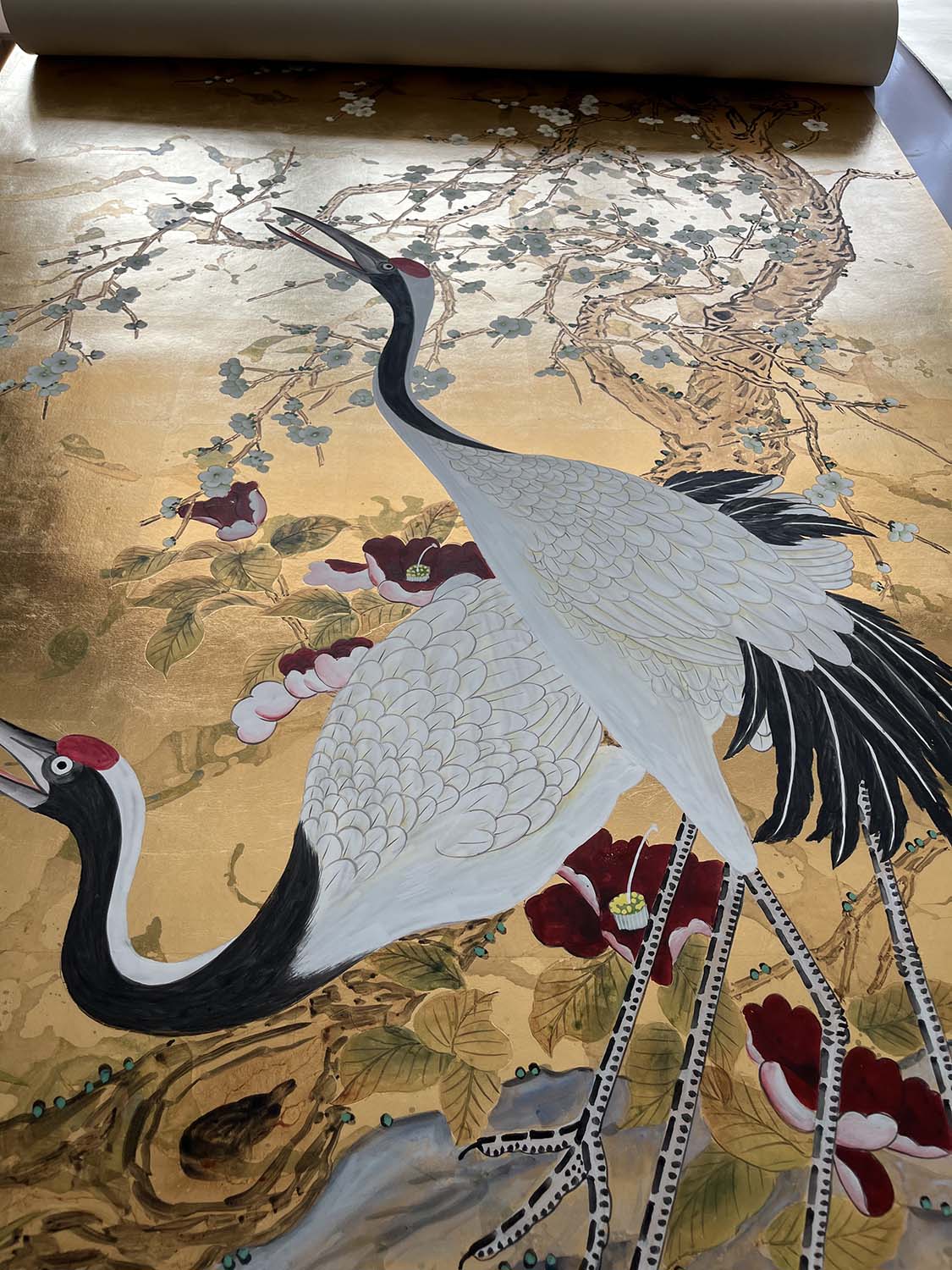As a high-end decorative material, silk wallpaper has been widely used in home decoration in recent years. It not only brings elegance and luxury to the home space, but also has good decorative effects and touch. However, when choosing silk wallpaper, many people will also care about one question: How is the moisture-proof performance of silk wallpaper? This article will start from the moisture-proof characteristics of silk wallpaper, deeply analyze its performance in humid environments, and give reasonable usage suggestions.
1. Moisture-proof principle
Silk wallpaper is usually made of natural silk or artificial fibers and is treated with special processes to improve its durability and moisture-proofness. Its moisture-proof ability mainly depends on the following aspects:
Surface coating: High-quality silk wallpaper usually adds a waterproof coating on the surface to reduce moisture penetration.
Substrate selection: Some high-end silk wallpapers use PVC or moisture-proof backing, which helps to improve moisture resistance.
Breathability control: Some silk wallpapers have a certain breathability, which can reduce moisture accumulation and reduce the risk of mildew.

2. Factors affecting the moisture-proofness of silk wallpaper
Although silk wallpaper has certain moisture-proof properties, it is still affected by a variety of environmental factors.
Air humidity: If the indoor humidity is high, it is easy to absorb moisture, which will affect the service life.
Wall surface treatment: Walls that have not been waterproofed are easy to absorb moisture, causing silk wallpaper to get damp.
Installation process: Correct construction methods (such as using waterproof glue) can effectively improve moisture resistance.
Room location: The rainy season in the south, high humidity areas, and rooms near water sources (such as bathrooms and kitchens) have higher requirements for wallpaper moisture resistance.
3. How to enhance moisture resistance?
In order to ensure that silk wallpaper can still maintain good condition in a humid environment, the following measures are essential:
3.1 Wall pretreatment
Before laying silk wallpaper, make sure the wall is dry and flat.
Before construction, a layer of moisture-proof primer can be applied to prevent water vapor penetration.
3.2 Choose high-quality wallpaper
Buy silk wallpaper with a moisture-proof backing, such as PVC base or non-woven base style.
Choose high-end silk wallpaper that has been waterproofed.
3.3 Correct construction method
Choose wallpaper glue with strong moisture resistance.
Avoid excessive glue from penetrating into the silk surface during construction to avoid affecting the appearance and moisture resistance.
Ensure that the wallpaper fits the wall completely, reduce air gaps, and reduce the possibility of moisture.
3.4 Choose the installation location appropriately
Although silk wallpaper has a certain moisture resistance, it is still not suitable for long-term exposure to high humidity. In areas with severe humidity (such as bathrooms or basements), other materials with better moisture resistance, such as PVC wallpaper or vinyl wallpaper, can be selected.
For walls where silk wallpaper is installed, it is best to choose a drier area and avoid the wall from being exposed to too much water. If silk wallpaper must be used in a humid environment, it is recommended to use silk wallpaper with a waterproof coating, or use other moisture-proof measures such as air dehumidifiers.
3.5 Daily maintenance and care
Regularly wipe the wallpaper surface with a dry, soft cloth to avoid dust accumulation and moisture retention.
In humid seasons, dehumidifiers or air conditioners can be used to control indoor humidity.
Avoid long-term contact of wallpaper with water vapor. If splashed with water, wipe it dry in time.
Using an appropriate amount of antifungal agent or moisture-proof agent, especially in the rainy season, can effectively reduce the risk of mildew.
4. Recommended scenarios
Although silk wallpaper has certain moisture-proof properties, it is still not suitable for extremely humid environments. The following are recommended spaces suitable for silk wallpaper:
Living room and bedroom: The environment is relatively dry, and the decorative effect and texture of silk wallpaper can enhance the overall space grade.
Study room and conference room: Less contact with moisture, suitable for using silk wallpaper to create an elegant atmosphere.
Hotels and villas: In high-end decoration projects, silk wallpaper can provide a visual enjoyment of luxury and taste.
Silk wallpaper has become an ideal choice for high-end decoration due to its elegant appearance and soft texture. Although its moisture-proof performance is slightly weaker than that of ordinary wallpaper, through reasonable construction technology, appropriate maintenance measures and environmental humidity control, its durability can be effectively improved to ensure that silk wallpaper maintains its beauty and practicality for a long time. Choosing suitable silk wallpaper and taking scientific moisture-proof measures can not only enhance the decorative effect of the wall, but also extend its service life, creating a more tasteful visual experience for home or commercial space.
www.ecwallpaper.com
ecwallpaper.com
